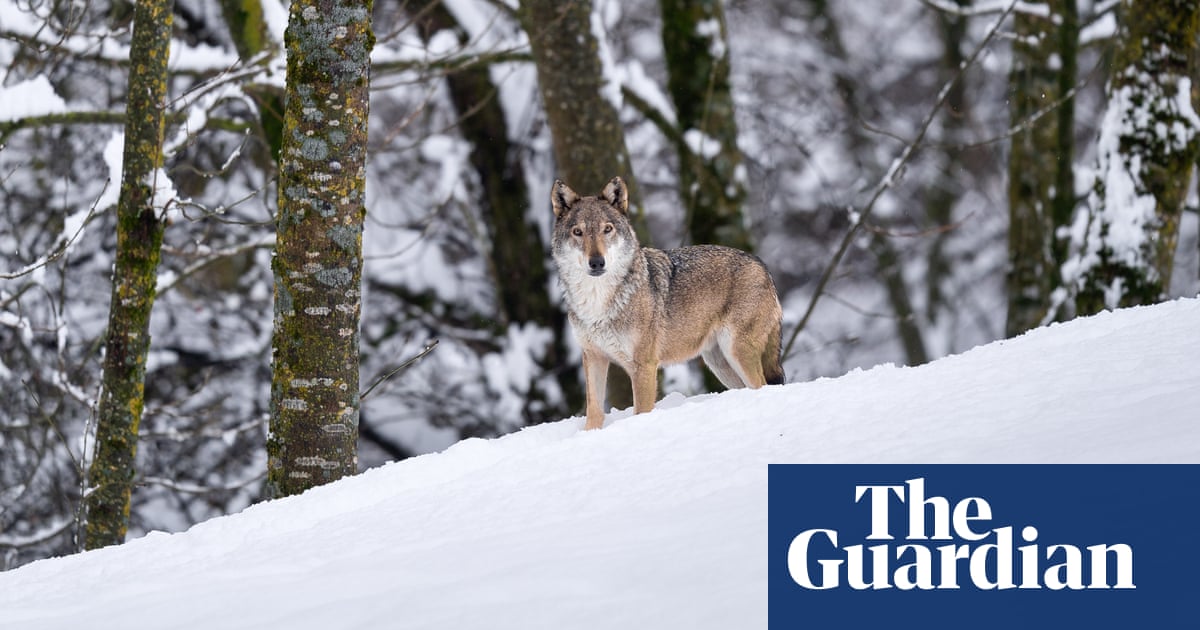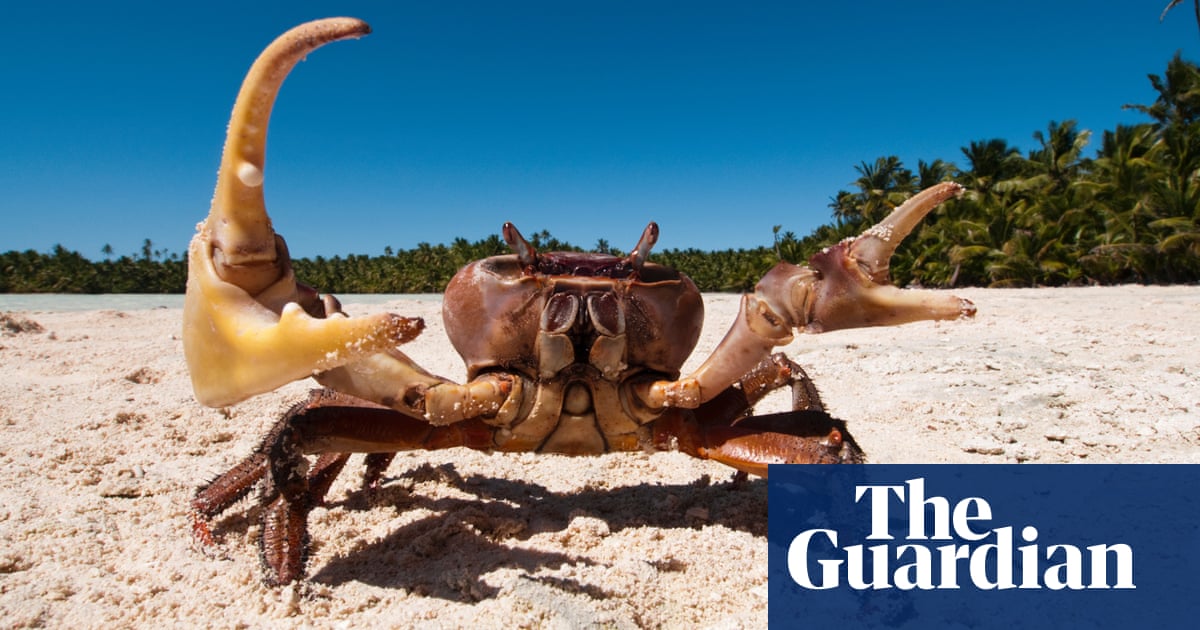‘We’d like to shoot them all’: growing army of wolfdogs raises hackles across Europe | Wildlife


From the moment the rangers first saw him on their trail cameras, the problem was apparent. The wolf, spotted deep in the woods of Italy’s Gran Bosco di Salbertrand park, was not grey like his companion, but an unusual blond. His colouring indicated this was not a wolf at all, but a hybrid wolfdog – the first to be seen so far into Piedmont’s alpine region. And where one hybrid is found, more are sure to follow.
“We thought he would go away,” says Elisa Ramassa, a park ranger in Gran Bosco who has tracked the local wolves for 25 years. “Unfortunately, he found a female who loves blonds.”
The blond specimen spotted in Piedmont illustrates the latest development in a worrying new trend. Over the past two decades, Europe’s decimated wolf population has slowly been resurrected through years of painstaking conservation work. Now hybrid numbers are rapidly growing – and if their spread continues, scientists fear they may put the European wolf – as a wild, genetically distinct animal – at risk of extinction.
In Piedmont, the blond hybrid produced at least two sets of pups before disappearing. “From one event, we now have several packs with hybrids,” says Luca Anselmo, a wolf tracker and researcher with Life WolfAlps EU, a multi-year, multimillion dollar initiative to support the return of wolves to Europe and reduce their conflicts with humans.
Hybrid wolfdogs are not a new phenomenon. While present-day wolves and dogs are distinct sub-species, they belong to the same canine family, and have retained genetic overlap since humans began domesticating ancient wolf ancestors thousands of years ago. Modern wolfdog hybrids had not been well-studied until recently, however, when advances in genetics made it possible to prove their existence. When Luigi Boitani, Italy’s leading wolf expert, captured a hybrid in 1975, he says he “was met with everything from gentle opposition to [people who] said, ‘this is bullshit’.”
Time has proven Boitani right. Today, a growing number of studies point to the presence of hybrids in nearly every European country with wolves, and in some areas their numbers are growing steadily. In Boitani’s native Tuscany, and other regions, they have become endemic, accounting for as much as 70% of the wolf population. The rise has been driven by the increasing destruction of wolf habitats and the expansion of human settlements, which bring people, their pets, and packs of stray dogs into more frequent contact with wolf packs.
In some regions “they are basically all hybrids,” Boitani says. “In this case, there is nothing you can do. You cannot send the army and kill everything.”
Hybrids trouble conservationists partly for their unpredictability. They may increase conflict with humans, crowd pure-blood wolves out of their habitat, or reduce the viability of future offspring, hampering efforts to revive Europe’s wolf population.
-
Anticlockwise from top: rangers search Gran Bosco di Salbertrand park for signs of wolves; camera traps are used to learn more about their behaviour; Luca Anselmo (left), a wolf researcher and tracker
Some fear that interbreeding will result in the permanent loss of the wolf’s distinct attributes. “If tomorrow I see an animal that is black and white, with floppy ears and a long tail, and you tell me it is a wolf, I [would] actually [be] disappointed,” Boitani says. “I don’t want to see wolves in that way.”
For many conservationists, such hybrids represent the growing imprint of humankind on a revered wild species. Frequently, they are the result of neglected working dogs mingling with isolated wolves, whose packs may have been disrupted by culls or poaching. In the words of Ramassa, the park ranger, they are “a human mistake”.
“We are speeding up a process that might have occurred naturally,” says Valeria Salvatori, a wolf expert who led the first Europe-wide study into hybridisation. “It’s like global warming … we do have a duty to mitigate such an impact.”
-
Francesca Marucco, scientific coordinator for Life WolfAlps EU, has studied wolves for more than 20 years
But there is considerable disagreement about what that mitigation should look like. Some experts, like Francesca Marucco, the scientific coordinator for Life WolfAlps EU, take a harder line. “We’d like to shoot … all [the hybrids] as soon as possible,” she says.
This approach is being taken by authorities including Austria, Switzerland, Poland and Slovenia. A female wolf who reproduced with a dog in Slovenia was recently culled alongside all her offspring – save one, who made it over the border to Italy. Animal rights groups in Italy have vocally opposed culling, and hybrids are more likely to be left alive long enough to breed.
With such a long history of interbreeding between species, some conservationists question an aggressive approach. In Poland,
researchers are leading investigations into the potential advantages of hybridisation. In Yellowstone national park in the US, for example, hybrid wolves were found to have higher resistance to certain diseases.
Wolfdog hybrids may also be better adapted to survive in a world where wolves are increasingly forced to live in urban environments. “In the modern, human-dominated world, maybe it is useful for the wolves to have some dog-like behaviour in them,” says Miha Krofel, a Slovenian researcher. “I think the costs outweigh the benefits … [but] we don’t really have an understanding of how problematic hybrids are for the human-wolf conflict.”
Others are pushing to better understand how hybrids behave in the wild, and whether they occupy wolves’ ecological niche. When Anselmo’s team learned of the hybrid pack in Piedmont, they set out not to kill, but capture and sterilise them. For 25 days, Anselmo and his team pursued one hybrid, who they called Godot, along the mountain slopes, observing stringent Italian welfare laws that require them to stay within 30 minutes’ distance from the trap.
At last, Godot was captured, neutered and collared, along with one of his siblings. The data from his collar has so far shown that the hybrid pack behaves much like any other, and appears to suffer no discrimination from their full-blooded peers.
“We feared that he would behave more like a dog – he would look for humans, or go near houses, looking for food,” says Ramassa. “But no, he’s like a wolf.”
Ultimately, however, Anselmo admits that catch-and-release is not a practical solution at scale. “It’s very difficult,” he says. “Trapping wolves is the most difficult thing I have done in my life.”
Addressing the conservation risk that wolfdogs pose will require some consensus among scientists – and wider society – about how to respond to hybridisation events.
“They need to have the courage and decide: what do we want to preserve?” says Salvatori. “Do we want to preserve wolves? Or something that has evolved from wolves, under the pressure that we have put on the environment?”
-
As hybrids continue to spread, can the European wolf survive as a wild, genetically distinct animal?
Find more age of extinction coverage here, and follow biodiversity reporters Phoebe Weston and Patrick Greenfield on X for all the latest news and features




